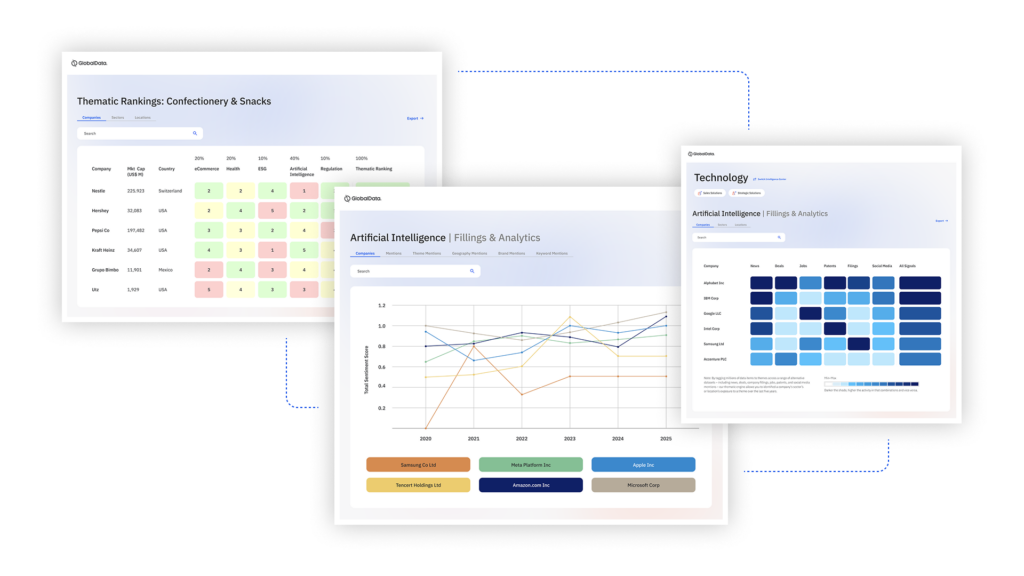Fashion on Fast Forward: Consumerism Shapes the Clothing
The fashion industry is multifaceted. It ranges from manufacturing and sourcing to design, merchandising and consumerism, to name just a few examples. However, the basic functioning of our industry remains clouded in mystery for the uninitiated.
Indeed, for many consumers, if the design and price of a garment works for them, then a sale occurs. What’s behind the garment — how it’s made and by whom — is secondary.
But, of course, there is so much more to the story. Where clothing originates and all of the steps necessary to produce desirable products for consumers is complicated. And it’s fraught with undesirable implications for many of the workers making these products, the planet’s environment, and even the behaviour of consumers. What’s more, taken together as a whole, our industry is amazingly innovative but it can come with terrible consequences.
Where does consumerism and fashion come from?
How did we get here? How did our industry evolve, and why are things the way they are? So often, I find myself in meetings (or more likely Zoom calls these days) with colleagues who know nothing about Multifiber Arrangement and the world of import quotas, for instance. Why are critical product development, sourcing offices, and manufacturers typically located halfway around the planet in places like Hong Kong or Shanghai, only to facilitate the production of apparel consumed back on the other side of the world in the US or Europe? Why is that?
For years, many consumers didn’t care to ask. However, a younger and more curious generation of consumers are not afraid to ask why. They want to know how their clothes are made and by whom. Not content to simply fill their closets with more stuff – many younger consumers ask another question: How much is enough?
Two essential reads for everyone in the apparel and textiles industry
This brings me to two books worth reading for anyone in the apparel industry. Both are insightful and help to peel back the layers of our industry’s supply chains and the economic and psychological drivers behind consumer purchasing decisions.

US Tariffs are shifting - will you react or anticipate?
Don’t let policy changes catch you off guard. Stay proactive with real-time data and expert analysis.
By GlobalDataWhen read together, both books describe the inner functions of our industry – the supply chain that begins with fibers and ends beyond consumers with the eventual disposal of clothing in the resale market or buried in landfills (a one-way trip to clothing hell).
Unraveled by Maxine Bédat
Unraveled, by Maxine Bédat, is notable for many things, but perhaps most important is her grasp of the history of our industry. She deftly shows how that history reflects the development of global supply chains to support the ever-growing demand for more clothes by consumers in the developed world.
Bédat goes to great ends to answer why things are the way they are in our industry. She also offers insightful analysis of the apparel industry’s responsibilities regarding labour rights, the environment and consumer behaviour.
Oh, and she even knows all about the Multifiber Arrangement, which governed the world trade in textiles and garments from 1974 through to 1994.
Bédat is a lawyer by training. She ran the clothing brand Zady and currently is the executive director of New York-based New Standard Institute. Her book will be compared with other excellent books such as Fashionopolis, by Dana Thomas, Overdressed: The Shockingly High Cost of Cheap Fashion, by Elizabeth Cline, and Travels of a T-Shirt in the Global Economy, by Pietra Rivoli.
Unraveled most closely resembles the Travels of a T-Shirt in that Bédat traces the path of production, consumption, and disposal of jeans in today’s consumer society, much like Rivoli focused on t-shirts for her book. However, that’s where the similarities end as Rivoli’s book tends to focus more on government policy and was written some years ago as a reaction to the neoliberal, free trade hysteria of the 1990s. In contrast, Bédat stresses the personal nature of the industry while illuminating the underside of our industry.
Bédat does a superb job of weaving a coherent and impactful human story. Well-written and researched, Bédat traces the supply chain from its origins in Texas, where cotton is grown for so many of the jeans consumed in the world today. And travels to China, where such cotton is spun into yarns, indigo dyed and woven into denim. It then moves to Bangladesh and Sri Lanka, where fabrics are cut and sewn into jeans, and back to the US, where jeans are sold at retail. Finally, it moves onto Africa, where discarded jeans from the US make their way into landfills — or into local markets.
This is no armchair analysis. On the contrary, Bédat took the time (and expense) of traveling to fields and factories to meet the people behind an ordinary pair of jeans — and by doing so, paints a rich human story of creativity and innovation. Throughout this journey, Bédat shares the stories of the people she met along the way. But her travels also uncovered the nasty underbelly of our business. The issues range from worker abuses, pollution and chemical toxicity to the seemingly ambivalent nature of consumerism in today’s world, and the world-within-the-world of post-consumer disposal of clothing.
All of this adds up to a complex but poignant and compelling story. The textile and apparel supply chain represents “an enormous industry,” says Bédat, but “it has a significantly destructive impact on our environment.”
Our industry has a lot to be proud about, but it also has a lot to be ashamed of at the same time. The apparel industry, notes Bédat, “employs millions of the most vulnerable people globally — the majority of them are women — and engages some of the lowest-paid domestically, as well.” In turn, Bédat’s story is made more urgent by the effects Covid-19 may have on the industry once the pandemic passes.
Bédat ends her book with a discussion about consumerism. She chastises the behaviours of consumers while also condemning a system that delivers products consumers desire. However, if there’s any criticism of this solid read, Bédat could have expanded on her observations about consumer behaviour.
In fact, she dedicates a chapter to the topic but only tips a toe into the subject matter. But this is a minor quibble. Read the book – you won’t be disappointed.
The Day the World Stops Shopping by R.B. MacKinnon
Fortunately, another author, Canadian journalist R.B. MacKinnon, just published The Day the World Stops Shopping. A noted writer for The Atlantic, The New Yorker, and National Geographic, and author of five non-fiction books, MacKinnon explores consumerism from different perspectives, including economics, psychology, the toll on society and the health of the planet.
His thesis is simple – would the world be better off if consumers consumed less? That’s a loaded question, of course. How would the global economy respond if consumers were to suddenly cut back on buying things? Not well. In fact, it would tank. But, as MacKinnon explains, that’s what happened in 2020 as the pandemic swept the globe. Moreover, as MacKinnon correctly points out, global GDP plummeted by more than 25% in 2020 at the height of the pandemic.
Even so, although the economic consequences were significant, the world didn’t come to an end. If anything, says MacKinnon, the environment became cleaner and consumers reevaluated what was truly important to them.
A permanent shift in consumer attitudes will be difficult for many reasons — beginning with psychology. Ever wonder why so many people, particularly in the US, refuse to get a Covid-19 vaccination? It’s more than politics, it’s human psychology and one of those social forces that’s hard to shift. Often it takes a tragedy or calamity to alter human behaviour.
He also asks a question that people have asked from time immemorial – does buying more stuff make people happier? In our industry, the answer would be a resounding yes as materialism keeps our supply chains humming.
In the developed world, necessity remains, but human desire remains supreme. People crave new fashions and look to buy more stuff, until they don’t. And that’s MacKinnon’s point. During the pandemic, many people stopped buying non-essentials. As a result, clothing sales plummeted while the types of clothing purchased changed (jeans stumbled while sales of yoga pants soared).
What if consumers could cut back their consumption? Sure, some things would get better. Perhaps clothing sales would be reduced in the name of environmentalism, but is there some effective means to control that? If history says anything, only calamities like wars or pandemics can cause such societal change. Nevertheless, once those things are over, society is prone to snap back to previous behaviour.
The epitome of over-consumption
MacKinnon explains: “In a world in which billions of people already have enough apparel, the only way to keep them buying is to generate unnecessary demand.” He goes on to say: “The way to accelerate fashion trends is to make clothes cheap enough to buy more and more often.” This is the essence of fast fashion and the epitome of over-consumption.
Of course, this shouldn’t stop us from educating the public to change their fashion consumerism habits. One comment about MacKinnon’s book is that after reading it, you’ll feel differently about buying just for the sake of buying stuff. Perhaps, that’s his point. Mindless consumerism may be good for the economy, but economic growth cannot happen without consequences.
Take the environment, MacKinnon proposes to cut consumption by 5% to minimise the economic damage, while addressing climate change. After all, such a reduction would rewind global GDP to that of just a few years ago. Sounds plausible on paper, but is it practical? Is it desirable? Yes, from the environmental standpoint, but not from an economic perspective. How does one undo capitalism? That’s a tough question.
Of course, much of MacKinnon’s premise is speculative, which means it’s an interesting intellectual exercise but not practical. For our industry, practicality always overrides the hypothetical.
If his ideas were ever implemented, they would undermine the fashion business that has exploded since about 1980. And a lot of jobs hang in the balance — in both the developed and developing world.
Hence, this is a great dilemma that ultimately makes such speculative ideas hard to realise in real-world situations. Of course, we’d all like a cleaner environment; that’s a given, but at what cost? The loss of one’s livelihood? That’s the bigger question and one that society has yet to come to grips with.




